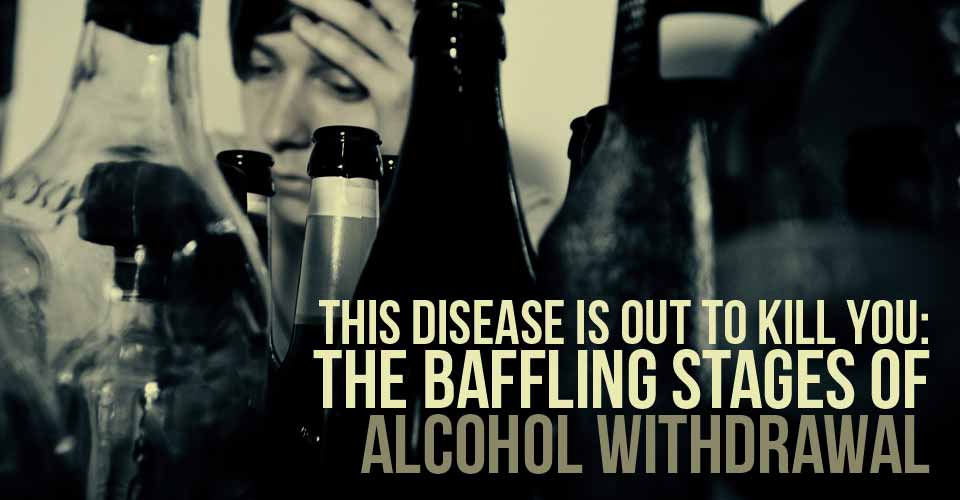
What if when you stopped drinking, you put your life at risk? That’s the frightening reality for many who abuse alcohol when they try to stop. Alcoholics suffer from an insidious, deceptive and deadly illness…and trying to quit almost always involves these stages of withdrawal:
Buy an “Intelligence is sexy” t-shirt!
1. Tremors set in, characterizing the first stage of alcohol withdrawal. Tremors begin 8 to 12 hours after a person who has been drinking heavily stops drinking. Among those who have experienced this, this period is often referred to as “the shakes”. It’s often accompanied by headache, nausea, vomiting, rapid heartbeat, anxiety, sweating and nausea. Picture your worst hangover, then amplify it by a factor of ten. That’s the gentlest of the first stage of withdrawal experienced by alcoholics.
2. Hallucinations begin 12 to 24 hours after an alcohol-dependent person stops drinking. Alcoholic hallucinosis, as this particular withdrawal symptom is called, is often aural rather than visual (or sometimes both). This means you hear instead of see things that aren’t there. Stage One symptoms are also often still present, though the person may start to experience periods of clear-headed thinking.
Studies Find Psychoactive Drug Safer Than Alcohol When Driving
3. Seizures characterize the third stage of alcohol withdrawal, beginning 6 to 48 hours after the person stops drinking. About 10% of alcohol-dependent individuals experience seizures.
4. Delirium tremens, often referred to as DTs, mark the final stage of alcohol withdrawal symptoms. They usually start 3 or 4 days after the person has stopped drinking, and can persist up to two weeks or more. DTs are serious, sometimes life-threatening symptoms often including severe tremors, agitation, fear, tachycardia (rapid heart rate), deep confusion, delusions and hallucinations. The onset of DTs may be marked by convulsions. Up to 30% of people who are dependent on alcohol will experience DTs, and 15% of those who do not receive medical treatment will die from delirium tremens. There is no way to stop DTs once they begin.
This all sounds pretty terrifying, right? The reality is that the effects of alcohol on the body are significant and profound, and the effects on a person’s brain chemistry are substantial. Fortunately, most normal drinkers don’t have to worry about this. A beer or two a night or a glass of wine with dinner probably isn’t enough to push a person into the throes of alcohol dependence.
The Truth About Coffee and Alcohol
Often, alcoholics are high-functioning and don’t fit the stereotype of what an alcoholic “looks like”. If you are concerned that you might be an alcoholic, or have problems managing your drinking, try taking this simple test.
The illness known colloquially as alcoholism, now medically designated as alcohol use disorder, is generally a chronic, terminal illness which can only be managed by abstinence from alcohol use. Usually, cessation of drinking is most successful when paired with treatment. Individuals who suffer from alcohol use disorder face a lifetime of vigilance in sobriety, as Craig Ferguson attests to in this awesome monologue about his personal battle with the illness. Most who have suffered through withdrawal symptoms find sobriety a welcome respite from the torment of their illness.
Please note that the author of this article is not a medical doctor. This is not intended as medical advice. If you or someone you know is experiencing symptoms of alcohol withdrawal, please go directly to the nearest emergency room for treatment.


